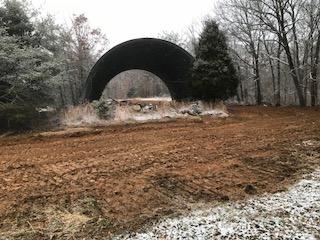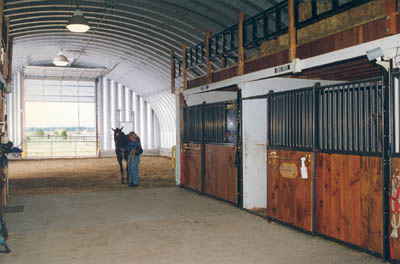My family is moving to TN in February, and the property we have purchased has a huge “barn” AKA airplane hanger. I am trying to think of ways to enclose the ends of the barn, the best course of action. My husband has ideas but I am interested in hearing other HORSE people’s opinions on the best way to go about this, for the horses.
We would like to enclose both ends, and build stalls and a tack room on one end, my husband gets a small portion for his tools and lawn mower  but the majority of the barn will be devoted to the horses. Would you completely enclose the ends? The barn is a whole heck of a lot bigger than it shows in pictures, probably about 75 feet high at the top. This is definitely going to be an interesting…conversion. I think in the end it will work out beautifully but I am having a hard time envisioning it.
but the majority of the barn will be devoted to the horses. Would you completely enclose the ends? The barn is a whole heck of a lot bigger than it shows in pictures, probably about 75 feet high at the top. This is definitely going to be an interesting…conversion. I think in the end it will work out beautifully but I am having a hard time envisioning it.
Thanks in advance!




